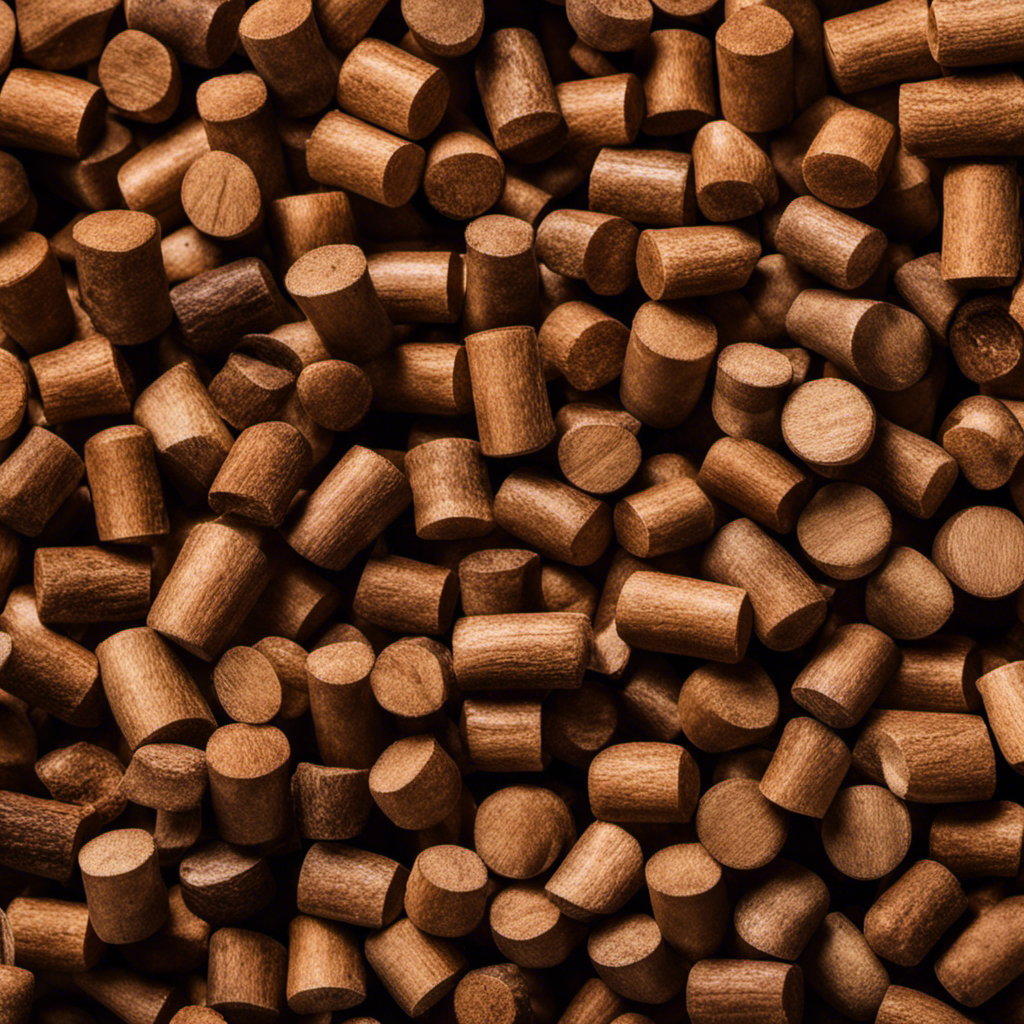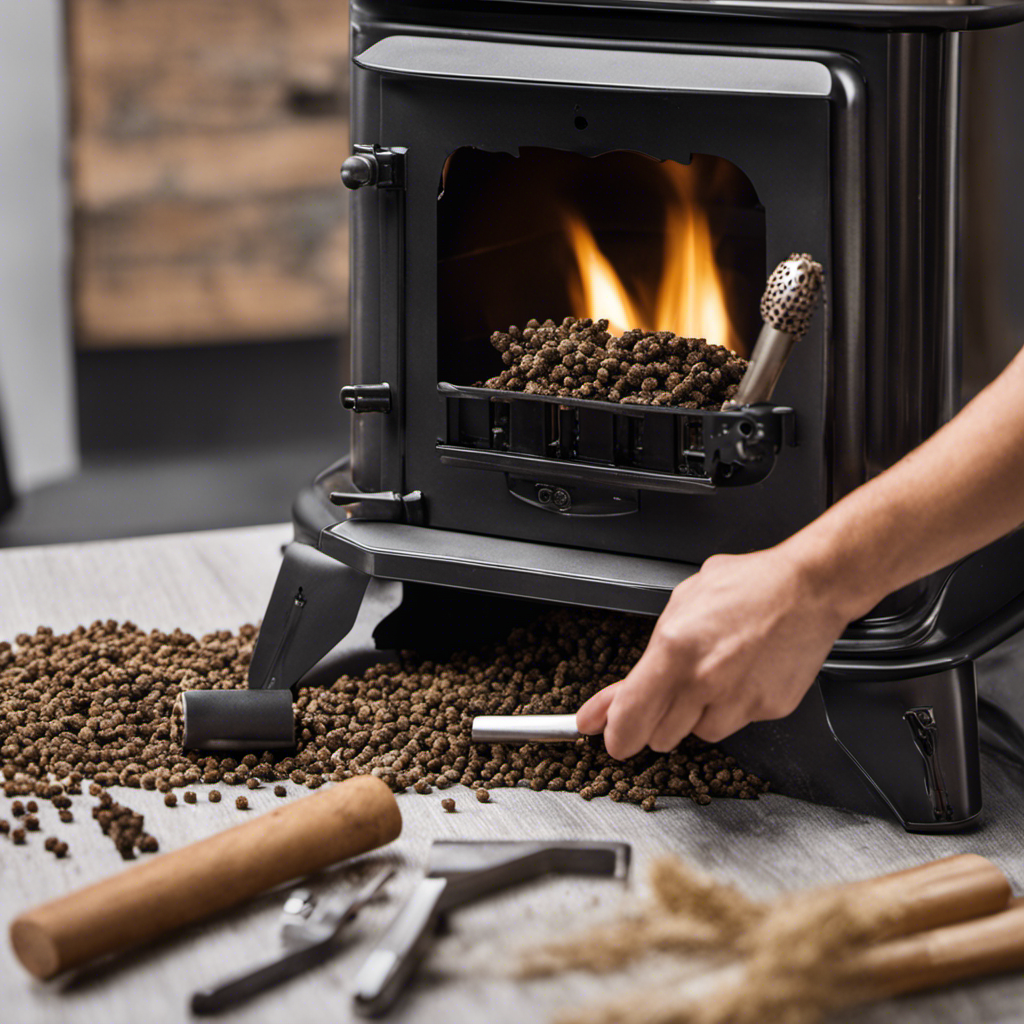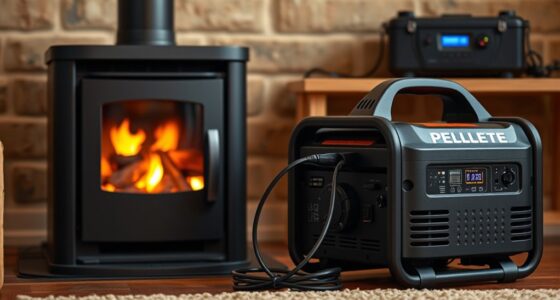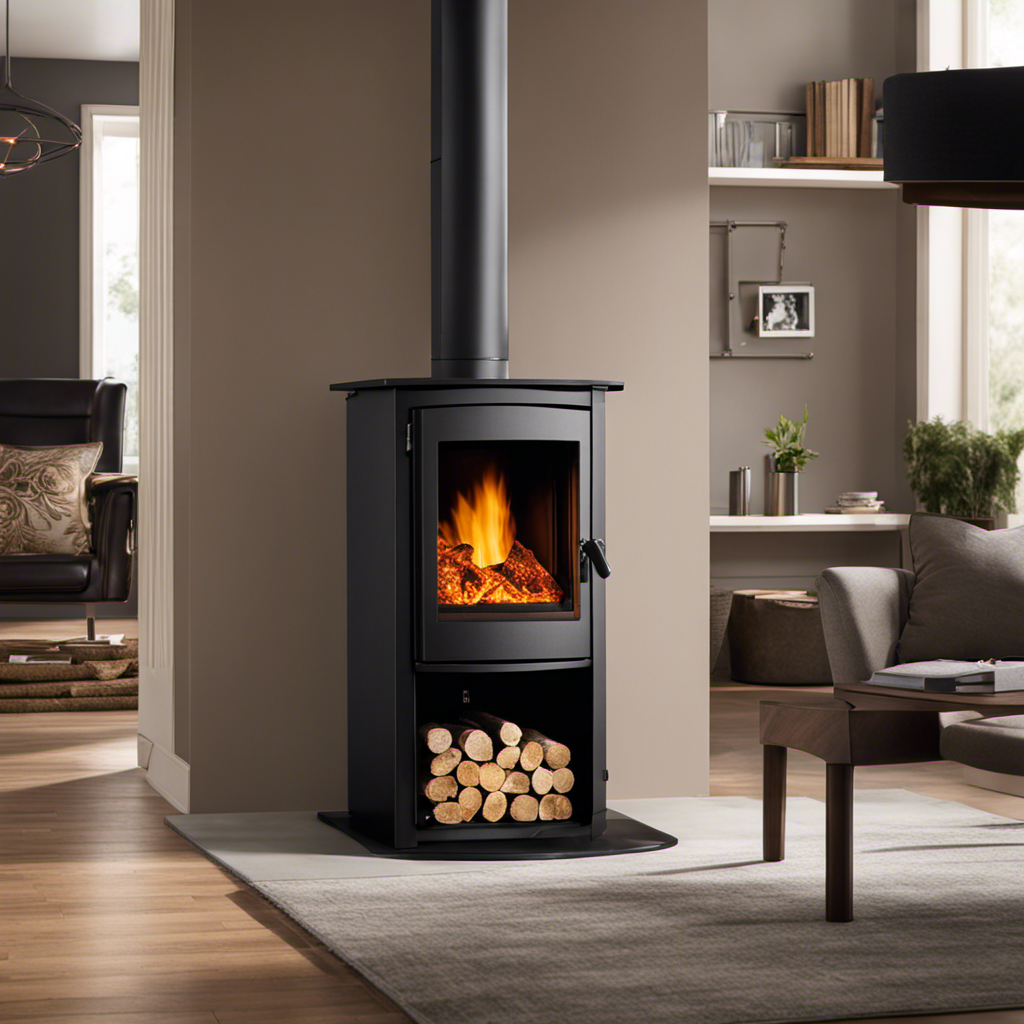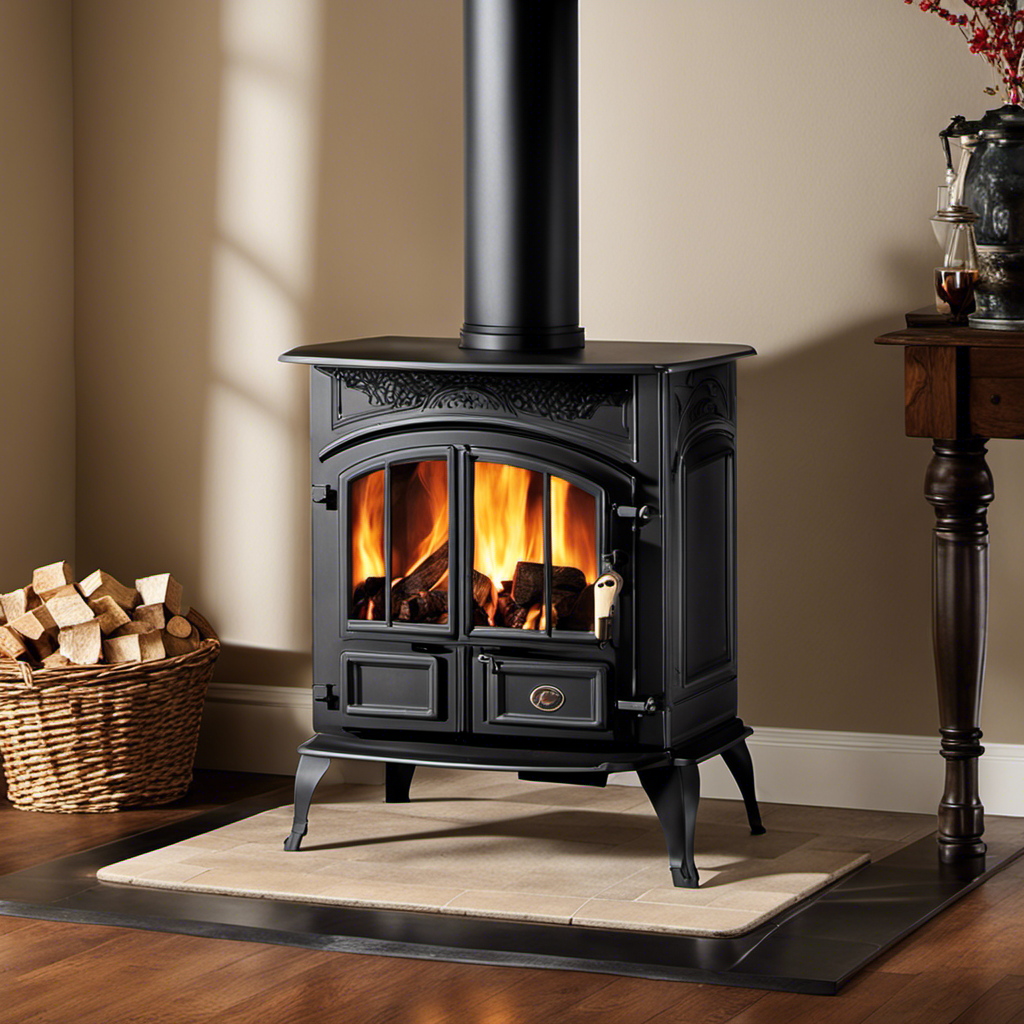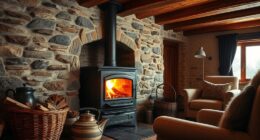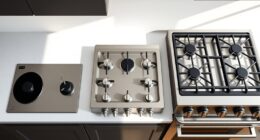Struggling with the decision between hardwood and softwood pellets for your pellet stove? Worry no more, as we’ve compiled some valuable insights to help you make the best decision!
Did you know that hardwood pellets burn longer, produce more heat, and create less ash? On the other hand, softwood pellets are typically cheaper and more readily available.
In this article, we’ll explore the benefits of both types and discuss the factors to consider when making your decision.
So, let’s dive in and find the perfect fuel for your stove!
Key Takeaways
- Hardwood pellets burn longer and produce more heat, making them suitable for colder climates.
- Softwood pellets are typically cheaper and more readily available in certain areas.
- Hardwood pellets have a lower moisture content and higher efficiency, potentially saving money in the long run.
- The choice between hardwood and softwood pellets depends on factors such as cost, availability, stove size, efficiency, and personal preferences.
Density and Grain Structure
The density and grain structure of hardwood pellets are higher and more complex compared to softwood pellets. When comparing fuel efficiency, the density of the pellets plays a crucial role.
Hardwood pellets have a higher density, which means they contain more energy per unit volume. This results in a longer burn time and higher heat output compared to softwood pellets.
The complex grain structure of hardwood pellets also contributes to their efficiency. The intricate network of fibers allows for more complete combustion, reducing the amount of unburned particles and emissions released into the environment.
In terms of environmental impact, the higher density and efficient combustion of hardwood pellets can result in lower carbon emissions and a smaller ecological footprint.
It’s important to consider these factors when choosing between hardwood and softwood pellets for your heating needs.
Benefits of Hardwood Pellets
When it comes to the benefits, we find that hardwood pellets burn longer, produce more heat, create less ash, and have a lower moisture content.
-
Longevity of burn: Hardwood pellets, with their higher density and complex grain structure, have the ability to burn for a longer period of time compared to softwood pellets. This means less frequent refilling of the stove, providing convenience and efficiency.
-
Efficiency: Hardwood pellets not only burn longer but also produce more heat. This is particularly beneficial for colder climates where a higher heat output is required to keep the space warm and comfortable.
-
Cost: Although hardwood pellets may be more expensive upfront, their longer burn time and higher heat production can result in cost savings in the long run. The efficiency of hardwood pellets allows for a more effective use of fuel, reducing the overall amount needed and ultimately lowering costs.
Considering the longevity of burn, efficiency, and cost, hardwood pellets prove to be a favorable choice for those seeking optimal performance and savings in their pellet stove.
Benefits of Softwood Pellets
As consumers, we appreciate the affordability and accessibility of softwood pellets in certain regions. Softwood pellets are typically cheaper than hardwood pellets, making them a cost-effective option for many. They’re also more readily available in certain areas, ensuring a steady supply for users. When considering cost comparison, softwood pellets often come out as the more economical choice.
In terms of environmental impact, softwood pellets have some advantages as well. Softwood trees, such as pine, spruce, and cedar, have a faster growth rate compared to hardwood trees. This means that softwood pellets can be produced more quickly and sustainably. Additionally, softwood pellets have a lower density and simpler grain structure, resulting in a cleaner burn and fewer emissions.
While softwood pellets may have a shorter burn time and lower heat output compared to hardwood pellets, the affordability and environmental benefits make them a viable option for many consumers. Ultimately, the choice between hardwood and softwood pellets depends on individual preferences, cost considerations, and the availability of resources in a specific region.
Factors to Consider When Choosing Pellets
Considering factors such as cost, availability, stove size, efficiency, and personal preferences is crucial when making a decision between hardwood and softwood pellets.
-
Cost considerations: Hardwood pellets are typically more expensive than softwood pellets. However, it’s important to evaluate the long-term savings in terms of efficiency and burn time.
-
Pellet stove efficiency: The efficiency of your pellet stove plays a significant role in determining the type of pellets to choose. Hardwood pellets, with their higher density and lower moisture content, tend to burn more efficiently and produce more heat. Softwood pellets may have a lower heat output and shorter burn time, but they can still be effective in a stove with lower efficiency.
-
Personal preferences: Ultimately, the choice between hardwood and softwood pellets is a matter of personal preference. Some may prefer the longer burn time and higher heat output of hardwood pellets, while others may prioritize cost savings and availability of softwood pellets.
Considering these factors will help you make an informed decision that suits your specific needs and priorities.
Making the Decision: Hardwood or Softwood?
In our decision-making process, we need to carefully weigh the advantages and disadvantages of hardwood and softwood options for our pellet stove.
When considering cost considerations, softwood pellets are typically cheaper than hardwood pellets. They may also be more readily available in certain areas.
However, hardwood pellets have their own benefits, such as burning longer and producing more heat.
It’s important to consider the environmental impact as well. Softwood pellets come from coniferous trees that grow faster and are more abundant, making them a potentially more sustainable option. On the other hand, hardwood pellets come from deciduous trees, which grow slower and may have a higher environmental impact.
Ultimately, the decision between hardwood and softwood pellets depends on personal preferences, budget, and environmental priorities. Proper research is crucial in order to make an informed choice.
Frequently Asked Questions
How Are Hardwood Pellets and Softwood Pellets Different in Terms of Density and Grain Structure?
In terms of density and grain structure, hardwood pellets and softwood pellets differ significantly.
Hardwood pellets have a higher density and a more complex grain structure compared to softwood pellets. This means that hardwood pellets are more solid and tightly packed, resulting in a longer burn time and higher heat output.
On the other hand, softwood pellets have a lower density and a simpler grain structure, making them less dense and burning faster.
These differences in density and grain structure contribute to the varying performance of the two types of pellets.
Are There Any Specific Environmental Considerations When Choosing Between Hardwood and Softwood Pellets?
When choosing between hardwood and softwood pellets, it’s important to consider the environmental impact and sustainability of each option.
Hardwood pellets often come from deciduous trees, which are slower growing and require more resources to produce.
Softwood pellets, on the other hand, are made from coniferous trees that grow faster and can be more sustainable.
Can Hardwood Pellets and Softwood Pellets Be Used Interchangeably in a Pellet Stove?
Yes, hardwood pellets and softwood pellets can generally be used interchangeably in a pellet stove.
However, it’s important to consider the specific benefits of using hardwood pellets. Hardwood pellets burn longer and produce more heat, making them suitable for colder climates. They also create less ash and are less likely to clog the burn pot.
Additionally, hardwood pellets have a higher density and more complex grain structure, resulting in a more efficient burn.
Are There Any Specific Safety Precautions to Take When Using Hardwood or Softwood Pellets?
When using hardwood or softwood pellets in a pellet stove, there are some safety precautions and storage guidelines to consider.
It’s important to store pellets in a dry area to prevent moisture absorption and degradation. Additionally, ensure that the storage area is well-ventilated to prevent the buildup of gases.
When handling pellets, it’s advisable to wear gloves to protect your hands from splinters and irritants.
Is There a Significant Difference in the Overall Carbon Footprint Between Hardwood and Softwood Pellets?
There is a significant difference in the overall carbon footprint between hardwood and softwood pellets.
Hardwood pellets have a lower carbon footprint compared to softwood pellets. This is because hardwood trees have a slower growth rate and denser wood, resulting in a higher energy content and less carbon emitted during combustion.
Softwood pellets, on the other hand, have a higher carbon footprint due to their faster growth rate and lower energy content.
Choosing hardwood pellets can have a positive impact on renewable energy and reduce carbon emissions.
Conclusion
In conclusion, when it comes to choosing between hardwood and softwood pellets for your pellet stove, it’s important to consider factors such as cost, availability, stove size, efficiency, and personal preferences.
By conducting thorough research and weighing these factors, you can make an informed decision and effectively fuel your fire.
Remember, the choice between hardwood and softwood is like comparing apples and oranges – each has its own unique qualities that can enhance your heating experience.
So, fuel your fire wisely and enjoy the warmth and comfort it brings.
Growing up surrounded by the vast beauty of nature, Sierra was always drawn to the call of the wild. While others sought the comfort of the familiar, she ventured out, embracing the unpredictable and finding stories in the heartbeat of nature.
At the epicenter of every remarkable venture lies a dynamic team—a fusion of diverse talents, visions, and passions. The essence of Best Small Wood Stoves is crafted and refined by such a trio: Sierra, Logan, and Terra. Their collective expertise has transformed the platform into a leading authority on small wood stoves, radiating warmth and knowledge in equal measure.

